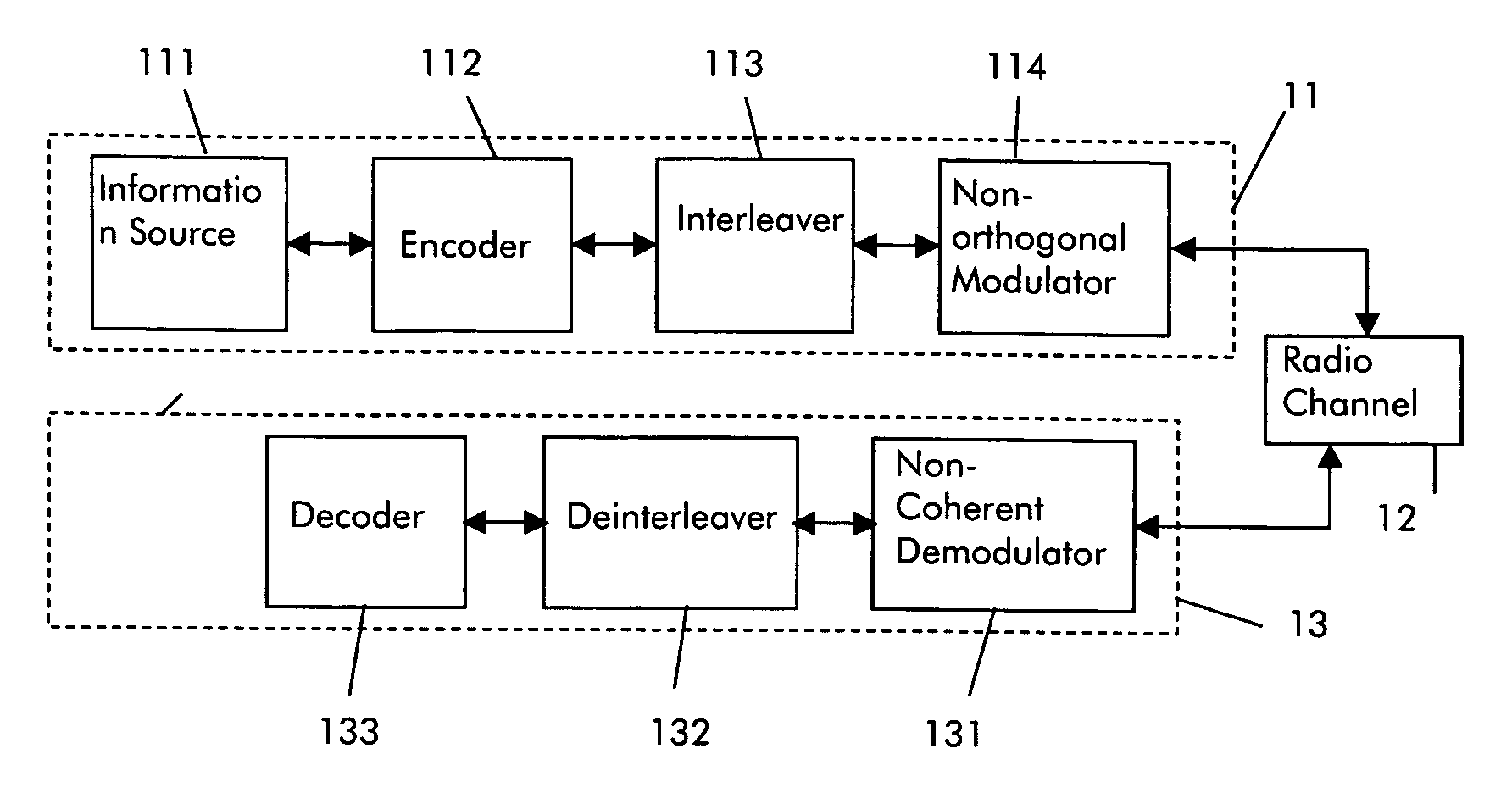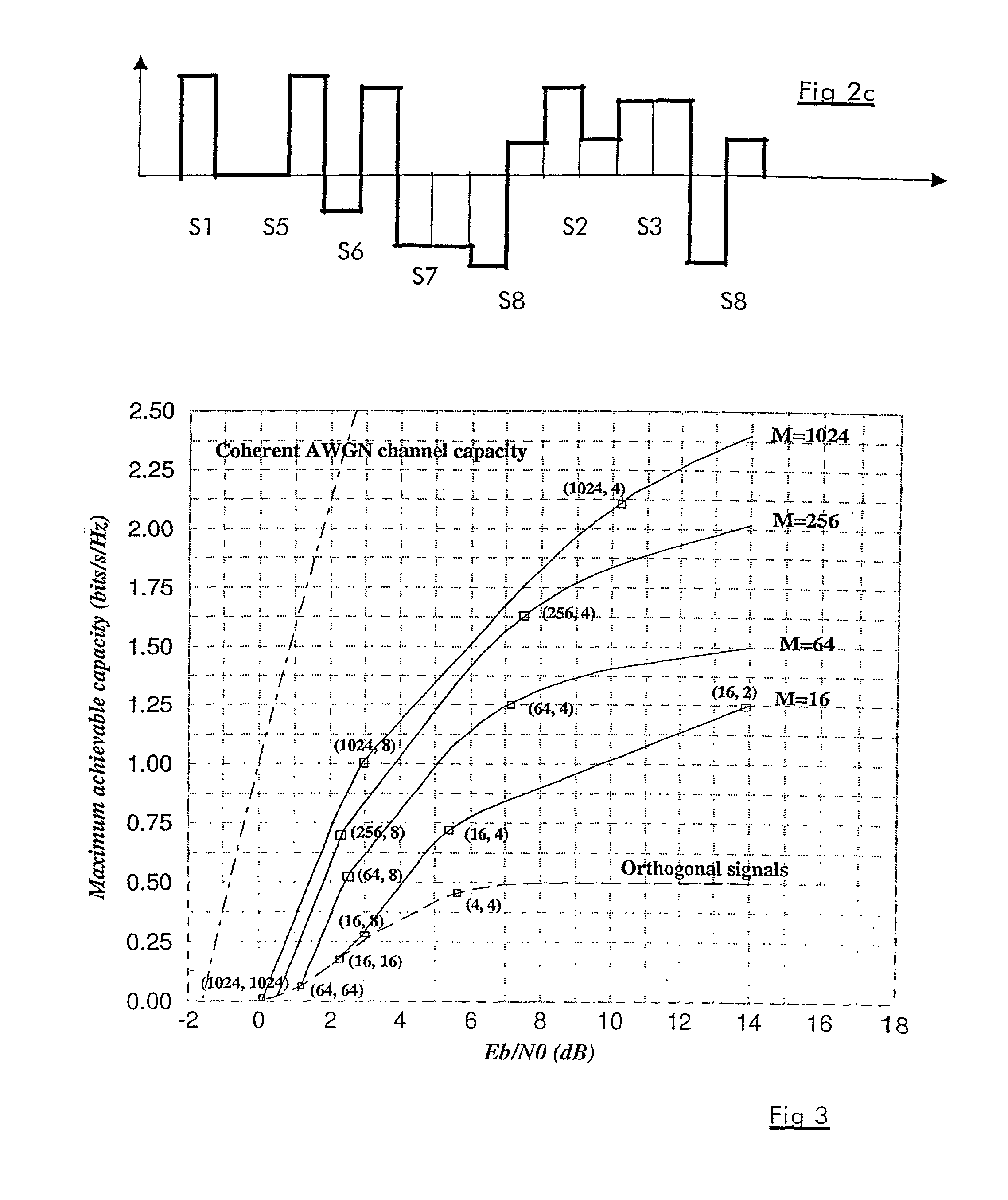Correlated spreading sequences for high rate non-coherent communication systems
a communication system and non-coherent technology, applied in the field of communication systems, can solve the problems of non-coherent detector performance degradation, high complexity of coherent demodulation, and high and achieve the effects of increasing the capacity of the communication network, reducing the cost of coherent demodulation, and reducing the complexity of coherent demodulation
- Summary
- Abstract
- Description
- Claims
- Application Information
AI Technical Summary
Benefits of technology
Problems solved by technology
Method used
Image
Examples
Embodiment Construction
[0036]FIG. 1 shows a communication chain where a non-orthogonal modulation code according to the invention can be used. Communication chain comprises a transmit part 11, a radio channel 12 and a receiver part 13. Transmit part comprises an information source 111, an encoder 112, an interleaver 113, a non-orthogonal modulator 114. Receiver part comprises a non-coherent demodulator 131, a deinterleaver 132 and a decoder 133. Non-orthogonal modulator 114, as known in the art, is responsible for transforming a numeric information flow composed of sequence of digital symbols in an electrical signal. Non-orthogonal modulator 114 supports the method according to the invention and generates an electrical signal having a period equal to the chip duration and an amplitude depending on the used spreading sequences. Spreading sequences to be used are generated and stored at non-orthogonal modulator 114.
[0037]A unique spreading sequence may be used at non-orthogonal modulator 114 as in usual mul...
PUM
 Login to View More
Login to View More Abstract
Description
Claims
Application Information
 Login to View More
Login to View More - R&D
- Intellectual Property
- Life Sciences
- Materials
- Tech Scout
- Unparalleled Data Quality
- Higher Quality Content
- 60% Fewer Hallucinations
Browse by: Latest US Patents, China's latest patents, Technical Efficacy Thesaurus, Application Domain, Technology Topic, Popular Technical Reports.
© 2025 PatSnap. All rights reserved.Legal|Privacy policy|Modern Slavery Act Transparency Statement|Sitemap|About US| Contact US: help@patsnap.com



